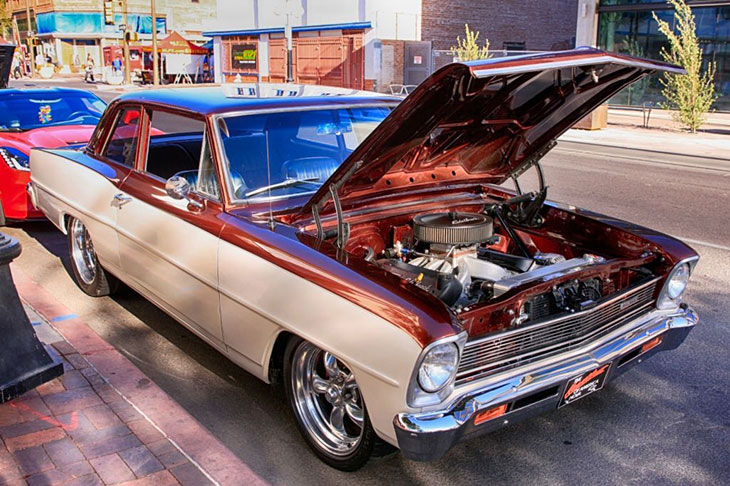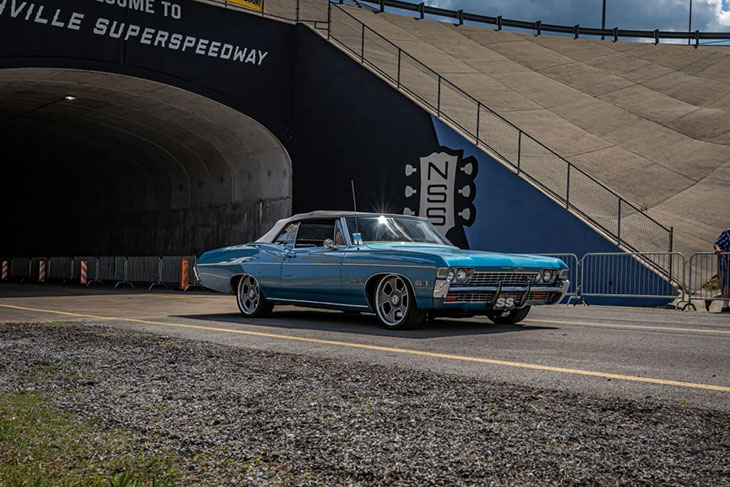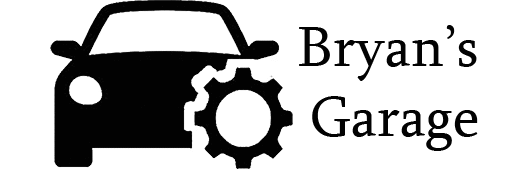Understanding engine codes is essential for those who own or are interested in classic Chevy cars. The Chevy 327 engine identification is no exception.
The engine codes are stamped onto the engine block and can provide the horsepower rating and the engine’s intended use.
Knowing how to read and interpret these codes is crucial for accurately identifying and valuing a Chevy 327 engine.
In this post, I’ll explore the different types of engine codes for Chevy 327 engines, the Chevy engine number decoder, and their significance.
What Is A Chevy 327 Engine Identification

The 327 Chevy engine identification numbers include various codes and numbers such as the engine code stamping number, VIN code, casting day, and engine block casting day number.
These codes and numbers can identify various details about the engine, such as when it was manufactured and its original application.
What Is The Location Of The Chevy 327 Engine Code?
The engine code for a Chevy 327 engine can be found on a pad stamped on the engine block.
The pad is located on the passenger side of the engine block, just below the passenger side cylinder head and cylinder wall.
What Are Chevy 327 Engine Identification?
Engine Code Stamping Number
- This code contains important information about the engine, such as the plant where it was produced and the date of production.
For example, the engine code stamping number on a Chevy 327 engine might read “V0404HC”:
“V” stands for the Flint, Michigan plant
“0404” indicates April 4th as the build date
“HC” indicates that the engine was intended for use in a Corvette with a manual transmission.
- Below is the Plant code:
- V: Flint (for engine)
- F: Flint (for motor)
- M: General Motors de México
- H: Hydramatic
- T: Tonawanda
- K: Saint Catharines, Canada
- S: Saginaw, Michigan
- In addition to the engine code stamping number, Chevrolet engines have a suffix code that provides information about the engine’s specifications. The suffix code is letters or numbers-letter combinations.
For example, you have an engine with the stamping number “3970010” and a ” CMJ ” suffix code. The ” CMJ ” suffix” corresponds to a 1974-1980 t4OO police and automatic trans appl engine.
You can consult websites and online forums about Chevrolet engine identification or ask for experts, or mechanics help to recognize the suffix code.
VIN Code
- VIN stands for Vehicle Identification Number. It is a unique code assigned to every vehicle by the manufacturer, which serves as its identifier.
- This 327 engine code location for Chevy vehicles can be found above the oil filter, on the rear of the block pad, or block on flange.
- The VIN is typically an alphanumeric code that contains important information about the vehicle, including:
- Where the vehicle was built
- Vehicle manufacturer
- Vehicle brand, engine type, and size
- Vehicle security code
- Model year
- Engine plant
- Vehicle sequence number
- Here’s another example of a VIN code format 1G9HF111111:
- 1: USA
- G: General Motors
- 9: vehicle security code
- H: 2017
- F: GM Flint Truck Assembly plant
- 111111: Vehicle serial/sequence number
Casting Day
- The casting day in Chevy 327 engine identification refers to the specific day of the month on which the Chevy big block or Chevy small block was cast.
- The casting day is represented by a code letter or number as part of the casting date, which is typically found on the driver side rear of the block on the flange forward of the bell housing.
- The code used for the casting month is as follows:
A: January
B: February
C: March
D: April
E: May
F: June
G: July
H: August
I: September
J: October
K: November
L: December
For example, if the casting date code on a Chevy 327 block engine is F028, it means that the block was cast on the 2nd day (02) of the month (F = June) and the last single digit of model year is 8, indicating that it was cast in 1978.
By checking the casting date, engine builders and drivers can determine the engine block’s approximate age and production period.
Engine Block Casting Day Number
The Chevy engine block identification is a specific number that indicates the casting characteristics and specifications of a particular engine block.
Click here to break down the information typically associated with engine block casting numbers.
Note:
- High Power: This refers to the maximum horsepower level for which the engine block was originally intended or commonly used. It provides the upper limit of power output the block is designed to handle.
- Low Power: indicates the lowest rated horsepower for which the engine block was used as part of a specific RPO (Regular Production Option) engine. It represents the lower end of power output that the block can support.
- Main Caps: refers to the Chevy engine numbers of bolts holding the main bearing caps in place. It specifies whether the block is a 2-bolt main or a four-bolt main.
The rod bolts help withstand higher stresses and reduce the risk of bottom-end failure. However, a properly prepared two-bolt main engine can still perform well.
Which Models Have a 327 Chevy Engine?

The following models may have been equipped with a 327 Chevy engine:
- Chevrolet Impala
- Chevrolet Camaro
- Chevrolet El Camino
- Chevrolet Malibu
- Chevrolet Chevelle
- Chevrolet Chevy II/Nova
- Chevrolet Corvette
The 327 engine is a popular Chevrolet engine and has been used in various vehicle models.
In addition to the listed models, the 327 engine can be found in other Chevrolet models like Monte Carlo and some pickup truck models like the C10 and K10.
Can You Swap Out The 327 Chevy Engine?
Can We Swap Out Parts From Other Engines To Use In 327 Chevy?
Yes, parts from other engines can often be swapped and used in a 327 Chevy engine.
The 327 engine is known for its part interchangeability, meaning that components from different year models and even vehicle models can be compatible with the 327 engine.
It also contributed to the engine’s longevity as compatible parts were readily available from models spanning almost 45 years.
Can You Know If The 327 Chevy Engine Is Replaced Based On This Identification?
Yes. To recognize if a 327 Chevy engine has been replaced, you can check the below ways:
- Engine Block Casting Number: Compare the casting number with the known specifications for the 327 Chevy engine. You can determine if it is original or has been replaced with a different engine.
- Suffix Code: The block suffix code stamped on the engine aluminum block provides additional information about the engine, such as its intended use and specifications. By decoding Chevy engine block numbers, you can gather more details about the engine and know if it matches the characteristics of a 327 Chevy engine.
- Documentation: If available, any documentation related to the vehicle or engine, such as maintenance records, service history, or original paperwork, may provide insights into the engine’s history and whether it has been replaced.
- Visual Inspection: An experienced mechanic or enthusiast can visually inspect the engine for any signs of modifications or mismatched components that may indicate a replacement.
Does Swapping Out Parts Affect The 327 Engine Identification?
Yes, swapping out parts can affect the Chevy engine identification. The identification of a 327 engine is based on specific markings and block codes found on its original components.
Swapping different parts into the engine can change these markings and make it more difficult to identify the engine accurately.
However, some common parts may still maintain the overall identification of a 327 engine.
Careful inspection is necessary to determine the engine’s true identification after parts have been swapped.
FAQs

What Are Some Common Date Codes For Chevy 327 Engine Components?
Common date codes for Chevy 327 engine components include:
- E (May)
- F (June)
- G (July)
- H (August)
- I (September)
- J (October)
- K (November)
- L (December)
These codes represent the months of the year and are often used in the block casting date of engine components to indicate when they were manufactured.
Is A Chevy Engine Swap Legal?
It depends on various factors and local regulations. Swapping or replacing an engine with a similar or identical engine is typically legal.
However, when swapping for a different engine, the legality can vary depending on the jurisdiction and specific regulations in place.
- Some states or regions may have rules that permit engine swaps without restrictions, allowing you to install any engine you desire.
- Others may require that the engine being swapped is the same as the original engine or that it was available during the year the vehicle was manufactured.
Thus, you should consult local laws and regulations to understand the specific requirements and limitations regarding engine swaps in your area.
Note that even if an engine swap is legal, there may be additional considerations, such as emissions compliance, safety requirements, and modifications or certifications.
Therefore, it’s advisable to research and comply with all applicable laws and regulations when considering an engine swap.
Conclusion
In conclusion, recognizing a Chevy 327 engine identification requires attention to details such as the engine code stamping number, VIN code, casting day, and engine block casting day number.
These factors play a crucial role in determining the specific characteristics and history of the engine.
It is important to conduct thorough research, consult experts, and adhere to local regulations when dealing with engine identification.
